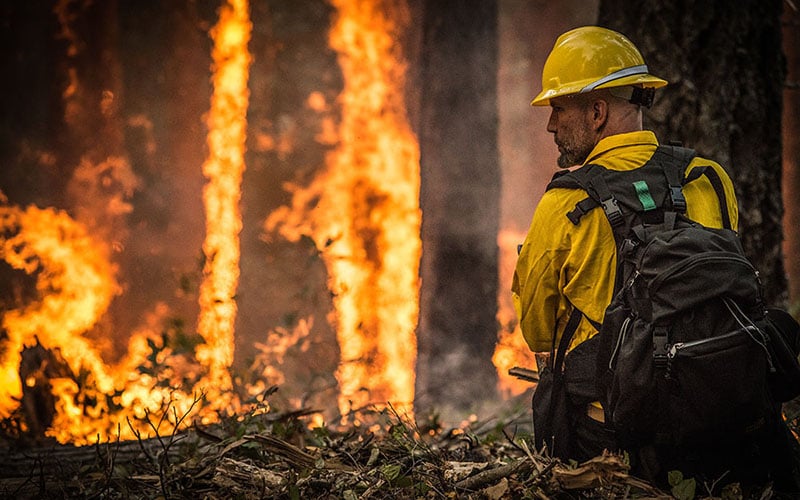
A firefighter conducts a prescribed burn at the Big Windy Complex fire near Galice, Oregon, in this photo from August 2013. Forest Service officials said a “devastating wildfire season” this year has cost hundreds of millions more than was budgetee. (Photo by Lance Cheung/U.S. Department of Agriculture)
WASHINGTON – When Congress passed the short-term budget that headed off a government shutdown Wednesday, it included $700 million to replenish U.S. Forest Service accounts that had been raided in recent months to fight wildfires
While they welcomed the money in the stopgap budget bill, federal officials said this week that more needs to be done, as the practice of transferring money to bolster a chronically underfunded firefighting account has been “getting worse every year.”
Critics have long said that practice of “fire transfer” of funds hurts other programs, including those that are aimed at stopping wildfires before they start.
“Even with these dollars, the practice of midseason fire transfers is hugely disruptive, puts people out of work, and impedes the ability of the agency to undertake all kinds of work, including forest restoration that reduces the threat of wildfire in the first place,” said a statement this week from the Department of Agriculture, of which the Forest Service is a part.
The funding comes near the end of a wildfire season that saw many Western states hit hard – even though Arizona escaped the season with relatively mild damages.
“Arizona and New Mexico were greener than we’d seen them for years,” said Mary Zabinski, the fire information officer for the Southwest Coordination Center, which coordinates reponse to wildfires in Southwestern states.
Zabinski attributes the mild season to a combination factors, including “a wet winter, a decent snowpack” and regular rains throughout the rest of the year.
Fires elsewhere, however, prodded the Obama administration to press Congress for legislation that “will stop fire transfers, address the ever-increasing costs of wildfire, and provide additional capacity for the agency to restore forests, making them more resilient to fires and other threats.”
That bill, the Wildfire Disaster Funding Act, is a bipartisan effort with 138 cosponsors in the House and 19 in the Senate. Five Arizona House members have signed onto the bill, which the USDA said would allow it to “treat catastrophic wildfires like the natural disasters they are.”
The bill would require a higher level of firefighting funds to begin with and change the way the Forest Service gets funding when the original budget runs out, by going directly to Congress for additional resources instead of relying on intrafund transfers.
As recently as Aug. 25, Forest Service Chief Tom Tidwell was drawing up plan to transfer up to $450 million from other programs, like timber salvage, to cover additional firefighting costs. But that number rose to $700 million by the time the stopgap budget, and its wildfire funding language, was passed.
Zabinski said her office’s main budgetary concerns are making sure that the 12 dispatch centers it coordinates are adequately funded and staffed, which she says has been handled well.
“We’ve been comfortable year after year, even when we’ve been in a drought,” Zabinski said.